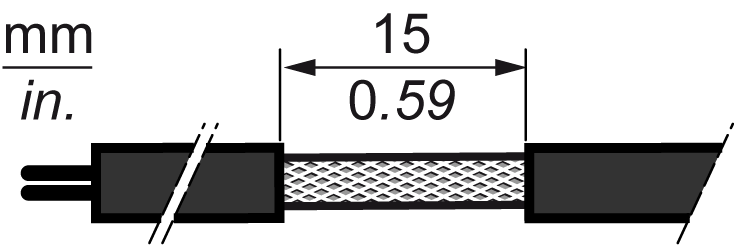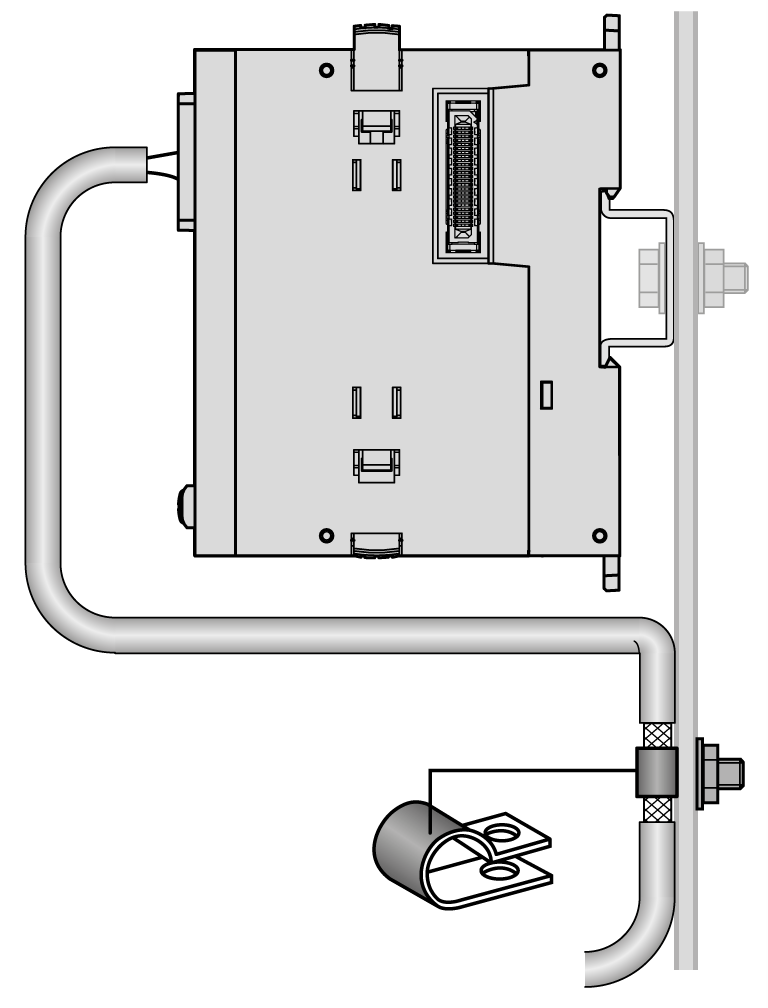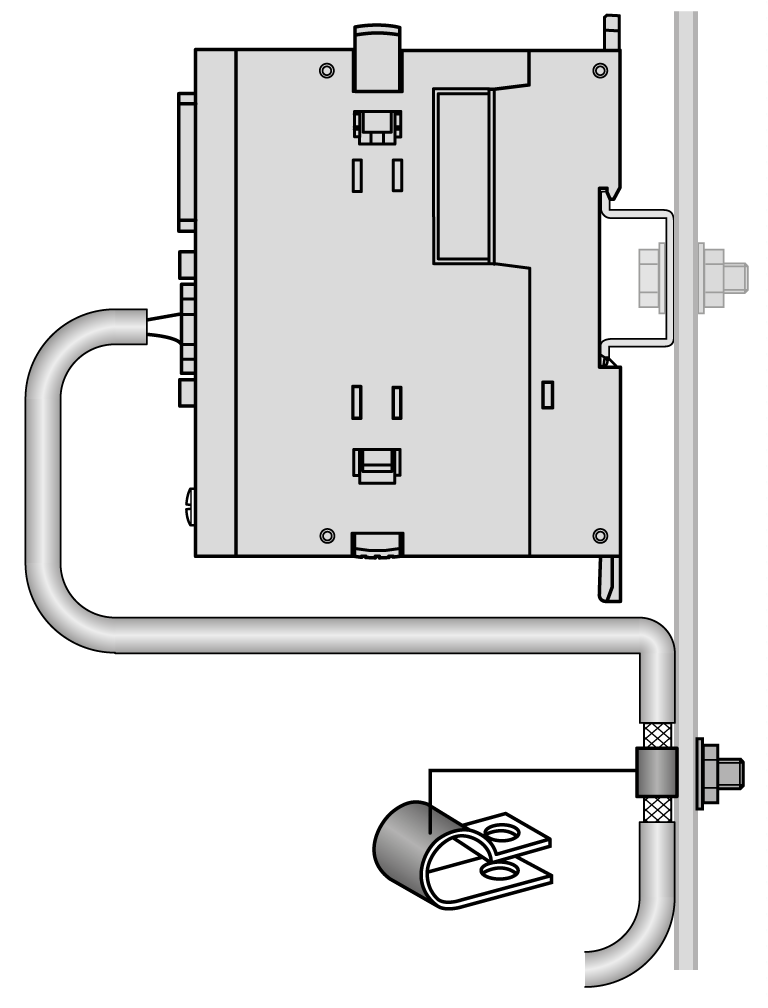Use shielded, properly grounded cables for all communication connections. If you do not use shielded cable for these connections, electromagnetic interference can cause signal degradation. Degraded signals can cause the controller or attached modules and equipment to perform in an unintended manner.
|
|
|
UNINTENDED EQUIPMENT OPERATION |
|
oUse shielded cables for all fast I/O, analog I/O and communication signals. oGround cable shields for all analog I/O, fast I/O and communication signals at a single point1. oRoute communication and I/O cables separately from power cables. |
|
Failure to follow these instructions can result in death, serious injury, or equipment damage. |
1Multipoint grounding is permissible if connections are made to an equipotential ground plane dimensioned to help avoid cable shield damage in the event of power system short-circuit currents.
The use of shielded cables requires compliance with the following wiring rules:
oFor protective ground connections (PE), metal conduit or ducting can be used for part of the shielding length, provided there is no break in the continuity of the ground connections. For functional ground (FE), the shielding is intended to attenuate electromagnetic interference and the shielding must be continuous for the length of the cable. If the purpose is both functional and protective, as is often the case for communication cables, the cable should have continuous shielding.
oWherever possible, keep cables carrying one type of signal separate from the cables carrying other types of signals or power.
Protective Ground (PE) on the Backplane
The protective ground (PE) is connected to the conductive backplane by a heavy-duty wire, usually a braided copper cable with a cross-section of 6 mm2 (AWG 10) or larger.
Functional Ground (FE) on the DIN Rail
The DIN Rail for your TMS is common with the functional ground (FE) plane and must be mounted on a conductive backplane.
|
|
|
UNINTENDED EQUIPMENT OPERATION |
|
Connect the DIN rail to the functional ground (FE) of your installation. |
|
Failure to follow these instructions can result in death, serious injury, or equipment damage. |
The connection between the functional ground (FE) and your TMS is made by the DIN Rail contacts on the back of the controller and the bus base of the expansion modules.
Rules for Connection to the Functional Ground
The following illustration and table show the characteristics of the screw to connect to the Functional Earth (FE):

|
NOTICE |
|
INOPERABLE EQUIPMENT |
|
Do not tighten screw terminals beyond the specified maximum torque (Nm / lb-in.). |
|
Failure to follow these instructions can result in equipment damage. |
Cables carrying the network and field bus communication signals must be shielded. The shielding must be securely connected to ground. The field bus communication cable shields must be connected to the protective ground (PE) with a connecting clamp secured to the conductive backplane of your installation.
|
|
|
HAZARD OF ELECTRIC SHOCK |
|
Ensure that communication cables are securely connected to the protective ground (PE). |
|
Failure to follow these instructions will result in death or serious injury. |
|
|
|
ACCIDENTAL DISCONNECTION FROM PROTECTIVE GROUND (PE) |
|
oDo not use the TM2XMTGB Grounding Plate to provide a protective ground (PE). oUse the TM2XMTGB Grounding Plate only to provide a functional ground (FE). |
|
Failure to follow these instructions can result in death, serious injury, or equipment damage. |
NOTE: The functional ground of the Ethernet connection is internal.
The shielding of the cables must be connected to the protective ground (PE).
Protective Ground (PE) Cable Shielding
|
Step |
Action |
Illustration |
|---|---|---|
|
1 |
Strip the shielding for a length of 15 mm (0.59 in.) |

|
|
2 |
Attach the cable to the conductive backplane plate by attaching the grounding clamp to the stripped part of the shielding as close as possible to the TMS base. |
On a TMSES4: 
On a TMSCO1: 
|
NOTE: The shielding must be clamped securely to the conductive backplane to help ensure good contact.